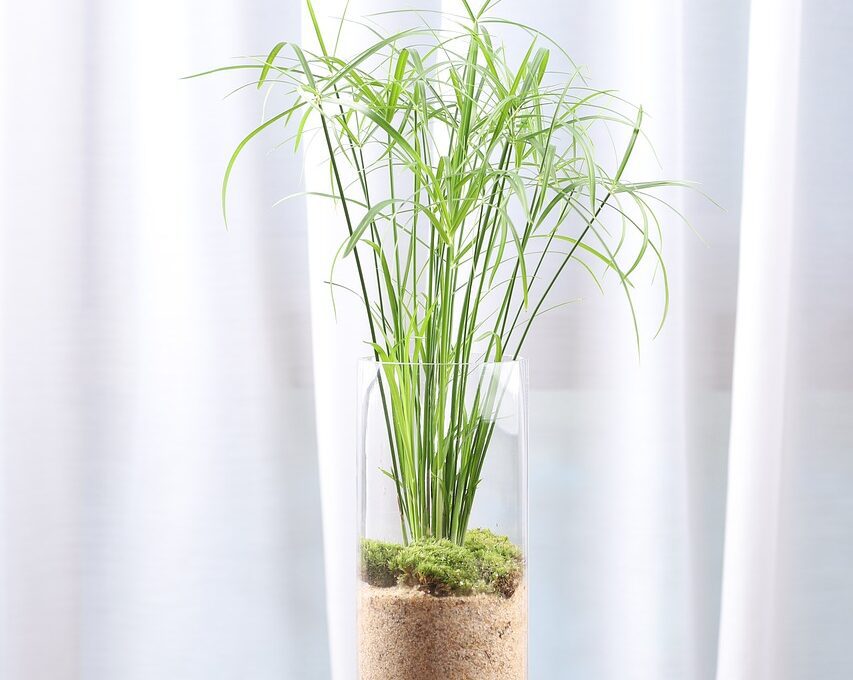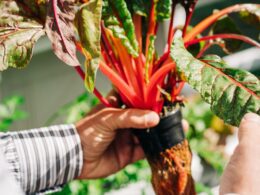Are you trying your hand at hydroponic lettuce growing but not getting the results you were hoping for? Hydroponic lettuce growing can be a rewarding experience, but it can also come with its fair share of challenges.
Whether you’re a beginner or an experienced grower, it’s important to be aware of the common problems that can arise and how to deal with them. In this article, we’ll take a look at some of the most common hydroponic lettuce problems and how to address them.
From nutrient imbalances to pest infestations, water quality issues to temperature and humidity control, and lighting and photoperiod, we’ll cover it all. By the end of this article, you’ll have a better understanding of how to troubleshoot and prevent common issues, so you can grow healthy and delicious hydroponic lettuce with confidence.
Nutrient Imbalances
If you’re noticing stunted growth or discoloration in your leafy greens, it might be due to an imbalance in the nutrients they’re receiving. Hydroponic lettuce is highly dependent on a balanced nutrient solution to thrive, and any fluctuations in pH or nutrient levels can cause major problems.
pH fluctuations can cause major nutrient imbalances and negatively impact the growth and health of your lettuce. One common problem that can occur due to nutrient imbalances is nutrient lockout. This is when your lettuce is unable to absorb certain nutrients due to high levels of other nutrients in the solution.
For example, if your lettuce has a high level of nitrogen, it may not be able to absorb enough calcium, which can lead to stunted growth and nutrient deficiencies. It’s important to keep a close eye on your nutrient levels and adjust them as needed to prevent nutrient lockout.
To prevent nutrient imbalances, it’s important to regularly test the pH and nutrient levels of your hydroponic solution. You can use a pH meter or test strips to monitor the pH levels, and a nutrient testing kit to check the levels of important nutrients like nitrogen, phosphorus, and potassium.
By keeping a close eye on your nutrient levels and making adjustments as needed, you can prevent common hydroponic lettuce problems and ensure your leafy greens are healthy and thriving.
Pest Infestations
You might notice bugs and insects crawling all over your lettuce plants, causing damage to the leaves and disrupting the growth of your hydroponic system. These pests can come from anywhere, and they can be a real nuisance. Some of the most common pests that can infest hydroponic lettuce plants include aphids, spider mites, thrips, and whiteflies.
To prevent pest infestations, it’s essential to maintain proper hygiene in your hydroponic system. Keep your hydroponic tank clean and free of debris, as pests can easily breed in dirty water. You should also regularly inspect your lettuce plants for any signs of pest infestations. If you notice any signs, such as yellowing or curling leaves, you should take action immediately.
There are several natural remedies that you can use to get rid of pests in your hydroponic lettuce system. For example, you can use insecticidal soap or neem oil to kill off pests. You can also introduce beneficial insects, such as ladybugs or lacewings, into your hydroponic system to help control the pest population.
By following these prevention methods and using natural remedies, you can keep your hydroponic lettuce system free of pests and enjoy healthy, vibrant plants.
Water Quality Issues
Maintaining the quality of water in your system is crucial in ensuring the success of your hydroponic lettuce growth. One of the most common water quality issues is pH fluctuations. The pH level of your water should be between 5.5 and 6.5 for optimal lettuce growth. If the pH level is too high or too low, it can lead to nutrient deficiencies and impact the overall health of your plants.
Monitoring the pH level regularly and adjusting it as needed is important in preventing any negative impacts. Another issue that can arise from poor water quality is nutrient lockout. This occurs when the nutrients in the water become unavailable to your plants due to various factors such as pH level or excess salts in the water. This can lead to stunted growth and poor quality lettuce.
It’s important to regularly check the nutrient levels in your water and flush your system with fresh water to prevent nutrient buildup. In order to maintain the quality of your water, it’s important to use clean, filtered water and avoid using water that’s been treated with chlorine or chloramine. Additionally, regularly cleaning your system and replacing the water every 2-3 weeks can help prevent any buildup of salts or other contaminants.
By staying on top of water quality issues, you can ensure the health and success of your hydroponic lettuce growth.
How Can Hydroponic Lettuce Problems Impact the Overall Downsides of Growing in Hydroponics?
Hydroponic lettuce problems can exacerbate the three drawbacks of hydroponic growth. Nutrient imbalances, pest infestations, and equipment failures can all lead to compromised crops and decreased yields. These issues not only affect the lettuce production but also highlight the downsides of hydroponics, including the potential for costly inputs, increased maintenance, and the need for constant monitoring to ensure optimal growth conditions.
Temperature and Humidity Control
Keeping a comfortable temperature and humidity level is crucial to ensuring your lettuce thrives in a hydroponic system. Here are some tips to control the temperature and humidity:
- Use proper ventilation methods to circulate air throughout the hydroponic system. This will help regulate temperature and prevent the buildup of moisture.
- Insulate your hydroponic system to maintain a stable environment. You can use materials such as foam board, reflective insulation, or even bubble wrap.
- Monitor the temperature and humidity levels regularly. Invest in a digital thermometer and hygrometer to accurately measure the conditions within your hydroponic system.
Adjust the temperature and humidity levels as needed. This may require adjusting the ventilation or adding a humidifier or dehumidifier to the system.
Consider using a temperature and humidity controller to automate the process and ensure optimal growing conditions for your lettuce.
By keeping a close eye on temperature and humidity levels, you can prevent common hydroponic lettuce problems such as wilting, mold, and disease. With proper ventilation methods and insulation techniques, you can create a healthy and stable growing environment for your lettuce.
Remember, a healthy hydroponic system is key to growing fresh and delicious lettuce. With a little attention to detail and monitoring, you can create the perfect environment for your lettuce to thrive.
Lighting and Photoperiod
Get ready to illuminate your hydroponic system and enhance the growth of your lettuce with the right lighting and photoperiod schedule. Light intensity and spectrum are crucial factors in the growth and development of lettuce. Make sure to choose a light source that emits the right spectrum and intensity for your plants.
For example, blue light promotes vegetative growth, while red light promotes flowering and fruiting. Light duration and interruption also play a vital role in the growth of your hydroponic lettuce. Lettuce needs at least 14 to 16 hours of light per day to grow properly. However, giving your plants 24/7 light can also lead to problems.
Make sure to give your plants a break by turning off the lights for at least 8 hours a day. This will help simulate natural day and night cycles, allowing your plants to rest and recover. Remember, lighting is just one aspect of hydroponic lettuce growing. Make sure to monitor and adjust all the necessary factors to ensure optimal growth and health for your plants.
With the right lighting and photoperiod schedule, your hydroponic lettuce will thrive and produce a bountiful harvest.
Frequently Asked Questions
How much space is required for a hydroponic lettuce garden?
Looking to start a hydroponic lettuce garden but not sure how much space you need?
Vertical farming and container gardening are two great options for growing lettuce in a small space. With vertical farming, you can stack multiple layers of plants on top of each other, making efficient use of your space. Container gardening allows you to grow lettuce in individual pots, which can be placed on shelves or hung from walls.
Both methods require minimal space and can be set up indoors or outdoors, depending on your preference. So, whether you have a small balcony or a tiny kitchen, you can still enjoy fresh, homegrown lettuce with these space-saving techniques.
What are the benefits of using hydroponic systems for lettuce cultivation?
If you’re looking to grow lettuce in a hydroponic system, you’ll be happy to hear about the many benefits that come with this method. One of the biggest advantages is vertical farming, which allows you to grow more plants in less space. This is great news if you have limited room for a garden.
Additionally, using a nutrient film technique ensures that your lettuce gets the exact nutrients it needs to grow strong and healthy. With these benefits, you can rest easy knowing that you’re growing safe and delicious lettuce without any of the common hydroponic problems that can come up.
Can hydroponic lettuce be grown without using artificial lighting?
Looking to grow hydroponic lettuce without using artificial lighting? There are alternative methods that can help you achieve this.
One option is to rely on natural lighting, such as placing the plants in an area with ample sunlight. However, it’s important to note that this may not be enough to sustain growth during certain seasons or in areas with limited sunlight.
Another alternative method is to use reflective materials to redirect natural light towards the plants. With the right approach, you can successfully grow hydroponic lettuce without relying on artificial lighting.
How often should I change the nutrient solution in my hydroponic system?
If you want to ensure the success of your hydroponic lettuce garden, it’s crucial to maintain a proper nutrient solution. One of the most important things to keep in mind is the benefits of continuous nutrient flow. This means that your plants should always have access to fresh nutrients, so it’s important to change the solution regularly.
The frequency of solution changes will depend on the size of your system and the type of lettuce you’re growing, but as a general rule, you should change your nutrient solution every two weeks. Additionally, it’s important to maintain a proper pH balance in your solution.
The ideal pH range for hydroponic lettuce is between 5.5 and 6.5. By keeping a close eye on your nutrient solution and pH level, you can ensure that your hydroponic lettuce garden is healthy and thriving.
Are there any specific varieties of lettuce that are better suited for hydroponic cultivation?
If you’re looking to grow lettuce in a hydroponic system, there are certain varieties that tend to perform better than others. Some of the best hydroponic lettuce varieties include Buttercrunch, Romaine, and Bibb. These varieties have been known to produce high yields and are resistant to common problems with hydroponic lettuce such as tip burn, root rot, and nutrient deficiencies.
However, it’s important to note that even the best varieties can still experience problems if the nutrient solution isn’t properly maintained or if other environmental factors aren’t optimal. So, while choosing the right variety is important, it’s equally important to stay on top of your hydroponic system maintenance to ensure your lettuce thrives.
Conclusion
So, you’ve learned about some common hydroponic lettuce problems. Don’t worry, with a little attention and care, you can overcome these issues.
First, make sure to monitor and adjust your nutrient levels regularly. Test your water quality and adjust accordingly to prevent imbalances. Keep an eye out for any pests and take action quickly if you notice an infestation.
Maintain proper temperature and humidity levels, and ensure adequate lighting and photoperiod for healthy growth. With these tips in mind, you can enjoy a bountiful harvest of delicious, fresh lettuce straight from your hydroponic garden.
Happy growing!









